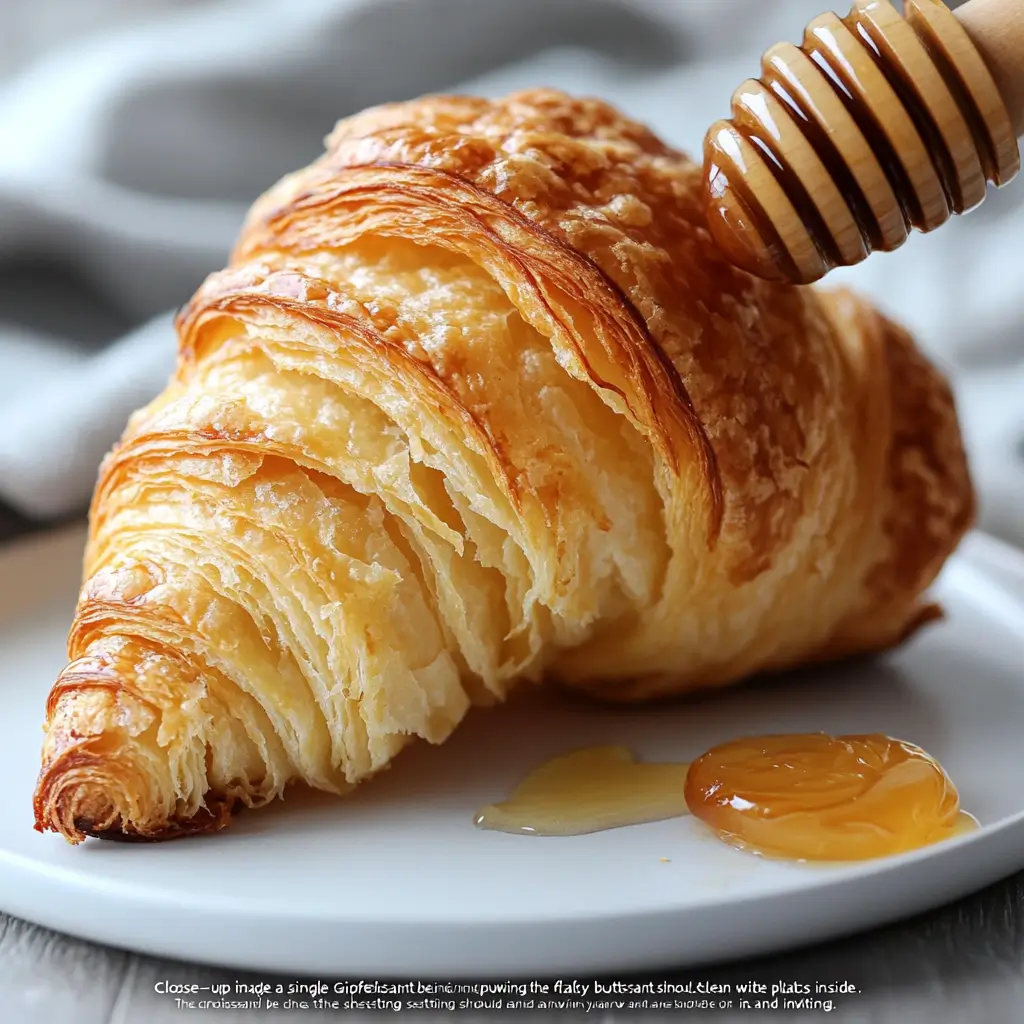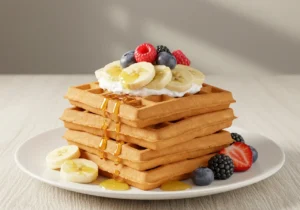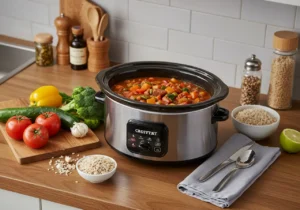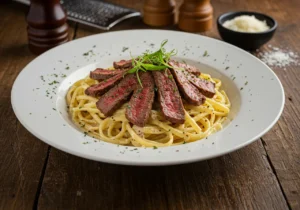Golden, flaky, and delightfully light—Gipfeli Recipe, the beloved Swiss crescent pastry, is a staple in bakeries across Switzerland. While it closely resembles the French croissant, Gipfeli has its own unique charm, often being slightly less buttery and more compact. Whether you’re a home baker or a pastry lover looking to recreate this classic treat, you’ve come to the right place!
In this guide, we’ll take you through everything you need to know about making Gipfeli from scratch. From understanding the history behind this delightful pastry to mastering the perfect dough, lamination, shaping, and baking techniques—we’ve got it all covered. Plus, we’ll explore different fillings, troubleshooting tips, and serving suggestions to help you create Gipfeli Recipe that rival those found in Swiss bakeries.
Now, let’s dive into the first part of our journey: the origins and characteristics of Gipfeli Recipe!
Introduction to Gipfeli Recipe
The Origins of Gipfeli Recipe
Switzerland may be famous for its chocolate and cheese, but its pastries—especially Gipfeli—deserve just as much recognition. This classic Swiss pastry has been a breakfast staple for centuries, enjoyed alongside a steaming cup of coffee or hot chocolate.
Historically, Gipfeli is believed to have roots in the Austrian Kipferl, a crescent-shaped pastry dating back to the 17th century. The French later introduced the croissant, which evolved into a richer, flakier variation. However, the Swiss took their own approach, crafting Gipfeli with a slightly denser texture and a more delicate buttery flavor. Unlike the traditional French croissant, Gipfeli doesn’t always rely on laminated dough, making it a bit easier to prepare at home.
Gipfeli vs. Croissant: Understanding the Differences
At first glance, Gipfeli and croissants might seem like twins—but look closer, and the distinctions become clear:
- Texture & Butter Content: Croissants are known for their ultra-buttery, flaky layers, whereas Gipfeli is slightly firmer with a more subtle butter flavor.
- Dough Composition: While croissants rely strictly on laminated dough, Gipfeli can be made using either laminated or enriched yeast dough.
- Sweetness Level: Swiss Gipfeli tends to have a touch more sugar, giving it a mildly sweet flavor, even without fillings.
- Shape: While both pastries take on a crescent form, Gipfeli is often a bit smaller and more compact than its French counterpart.
So, if you’ve ever wondered why the croissant you buy in Switzerland tastes different from those in Paris, now you know! Gipfeli holds its own as a uniquely Swiss treat, beloved for its crisp yet tender bite.
Continuing our exploration of the Gipfeli recipe, let’s delve into the essential ingredients and the step-by-step process to craft these delightful Swiss pastries.
Ingredients for Traditional Gipfeli Recipe
Essential Ingredients
To create authentic Gipfeli, gather the following ingredients:
- All-Purpose Flour: Provides the necessary structure for the pastry.
- Unsalted Butter: Cold and cubed; essential for achieving flaky layers.
- Warm Milk: Aids in yeast activation and enriches the dough.
- Active Dry Yeast: Leavens the dough, giving it a light texture.
- Granulated Sugar: Adds a touch of sweetness to the pastry.
- Salt: Enhances the overall flavor.
- Egg: Used for the egg wash to give the Gipfeli a golden sheen.
Ingredient Measurements
For a batch yielding approximately 12 Gipfeli, you’ll need:
- 3 cups (360g) all-purpose flour
- 1 cup (225g) unsalted butter, cold and cubed
- **¾ cup (180ml) warm milk (110°F/43°C)**
- 2¼ teaspoons active dry yeast
- 2 tablespoons granulated sugar
- 1 teaspoon salt
- **1 egg, beaten (for egg wash)**
These measurements ensure a balanced dough that’s both tender and flaky.
Step-by-Step Gipfeli Recipe
Creating Gipfeli involves several stages, each crucial to achieving the perfect pastry. Follow these steps meticulously for the best results.
1. Preparing the Dough
Activating the Yeast:
- In a small bowl, combine warm milk and a pinch of sugar. Sprinkle the active dry yeast over the milk and let it sit for about 5-10 minutes until frothy.
Mixing the Dough:
- In a large mixing bowl, whisk together the all-purpose flour, granulated sugar, and salt.
- Gradually pour the yeast mixture into the dry ingredients, mixing until a soft dough forms. If the dough is too sticky, add a little more flour; if it’s too dry, add a bit more milk.
Kneading and First Rise:
- Transfer the dough onto a lightly floured surface and knead for about 5-7 minutes until smooth and elastic.
- Place the dough in a lightly greased bowl, cover with a damp cloth, and let it rise in a warm place for 1-2 hours or until doubled in size.
2. Laminating the Dough
Lamination is the process of folding butter into the dough multiple times to create thin layers, resulting in a flaky texture.
Preparing the Butter Block:
- Place the cold, cubed butter between two sheets of parchment paper.
- Using a rolling pin, pound and shape the butter into a 7½-inch square block of even thickness. Refrigerate for 15 minutes to firm up.
Incorporating the Butter:
- Roll out the risen dough on a lightly floured surface into a 12-inch square.
- Place the chilled butter block diagonally onto the dough square, so it resembles a diamond shape over the dough.
- Fold the corners of the dough over the butter, enclosing it completely.
Rolling and Folding (Turns):
- Gently roll the dough into a 24 x 12-inch rectangle.
- Fold the dough into thirds, like a letter.
- Rotate the dough 90 degrees, roll it out again into a 24 x 12-inch rectangle, and perform another letter fold.
- Wrap the dough in plastic wrap and refrigerate for at least 30 minutes.
- Repeat this rolling and folding process two more times, chilling the dough between each turn.
3. Shaping the Gipfeli Recipe
Cutting the Dough:
- After the final chill, roll the dough into a large rectangle about ¼-inch thick.
- Using a sharp knife or pizza cutter, divide the dough into triangles with a base of approximately 3-4 inches.
Forming the Crescent Shape:
- Starting from the base of each triangle, roll the dough towards the tip, gently stretching it as you roll.
- Curve the ends slightly inward to form a crescent shape.
Final Proofing:
- Place the shaped Gipfeli on a baking sheet lined with parchment paper, leaving space between them.
- Cover with a clean kitchen towel and let them rise for 30-45 minutes until slightly puffy.
4. Baking the Gipfeli Recipe
Egg Wash:
- In a small bowl, beat the egg and brush it gently over the risen Gipfeli.
Baking:
- Preheat the oven to 375°F (190°C).
- Bake the Gipfeli for 15-20 minutes or until golden brown.
Cooling:
- Remove from the oven and let them cool slightly on a wire rack before serving.
Tips and Techniques for Perfect Gipfeli Recipe

Achieving the ideal Gipfeli requires attention to detail and some insider tips.
Variations of the Gipfeli Recipe
While the classic Gipfeli recipe is delightful on its own, there are many variations to explore. Whether you prefer a sweet or savory twist, these adaptations will add excitement to your homemade pastries.
Sweet Gipfeli Recipe Variations
If you have a sweet tooth, consider adding some delicious fillings to your Gipfeli Recipe.
- Chocolate Gipfeli: Before rolling the dough, place a small piece of dark chocolate at the base of each triangle. As the pastry bakes, the chocolate melts, creating a rich, indulgent treat.
- Almond-Filled Gipfeli: Spread a thin layer of almond paste or marzipan onto the dough triangles before rolling. The nutty sweetness pairs perfectly with the flaky pastry.
- Vanilla Custard Gipfeli: Spoon a small amount of thick vanilla custard onto each triangle before rolling. This adds a creamy texture and extra sweetness.
- Fruit Jam Gipfeli: Spread a teaspoon of apricot, raspberry, or strawberry jam onto the dough for a fruity burst of flavor.
Savory Gipfeli Recipe Variations
For those who prefer a more filling breakfast or snack, try these savory options.
- Cheese & Ham Gipfeli: Add a thin slice of Swiss cheese and ham before rolling the dough. This creates a warm, melty center when baked.
- Spinach & Feta Gipfeli: A Mediterranean-inspired option! Mix cooked spinach with crumbled feta cheese and place a small amount in each Gipfeli before rolling.
- Pesto & Cheese Gipfeli: Spread a layer of basil pesto on the dough before rolling, then sprinkle with grated Parmesan for a flavorful twist.
These variations allow you to enjoy Gipfeli in many different ways, making them a versatile choice for any occasion.
Common Mistakes and Troubleshooting Gipfeli Recipe Dough
Baking Gipfeli Recipe can be a rewarding experience, but certain mistakes can lead to less-than-perfect results. Here’s how to avoid common pitfalls.
Dough is Too Hard or Tough
If your Gipfeli turns out too dense, the dough may have been over-kneaded or the butter might not have been properly incorporated. To fix this:
- Avoid excessive kneading—stop once the dough is smooth and elastic.
- Ensure the butter is evenly distributed within the layers to maintain flakiness.
- Let the dough rest properly between folding to prevent it from becoming too tight.
Butter Leaks During Baking
Nothing is more frustrating than seeing butter melt out of your pastries instead of staying in the layers. This happens when:
- The butter is too warm before lamination—always keep it chilled.
- The dough wasn’t properly sealed around the butter. When folding, press down the edges to lock in the butter.
- The oven temperature is too low. Bake at the right temperature (375°F / 190°C) to quickly set the layers before the butter melts out.
Gipfeli Recipe Doesn’t Rise Properly
If your Gipfeli Recipe doesn’t puff up during baking, it could be due to:
- Expired yeast: Always check the freshness of your yeast before starting.
- Underproofing: Let the dough rest and rise properly before shaping. Cold dough won’t expand well in the oven.
- Rolling the dough too thin: If the layers are too compressed, they won’t separate properly during baking.
By paying attention to these details, you’ll get beautifully risen, flaky Gipfeli Recipe every time.
Serving and Storing Gipfeli Recipe
Once you’ve mastered the Gipfeli recipe, it’s time to serve and store them properly to maintain their delicious texture and flavor.
How to Serve Gipfeli
Gipfeli is best enjoyed fresh out of the oven when it’s warm and crispy. However, if you need serving ideas, try:
- With Coffee or Hot Chocolate: The classic Swiss way to enjoy Gipfeli is with a cup of coffee or hot cocoa.
- With Butter and Jam: Split the Gipfeli in half and spread butter or fruit jam for an extra layer of richness.
- As a Sandwich: Use a savory Gipfeli as a base for a mini sandwich. Add cheese, ham, or scrambled eggs for a delicious breakfast option.
How to Store Gipfeli

To keep Gipfeli fresh, proper storage is key.
- At Room Temperature: Store in an airtight container for up to two days. Reheat in the oven at 300°F (150°C) for a few minutes before serving.
- In the Refrigerator: For longer storage, place Gipfeli in an airtight container in the fridge for up to five days. Warm them in the oven before serving.
- In the Freezer: If you want to save Gipfeli for later, freeze them in a single layer on a baking sheet before transferring them to a sealed bag. They can last up to two months. To reheat, bake at 350°F (175°C) for about 10 minutes.
By following these storage tips, you can enjoy your homemade Gipfeli anytime!
For more delicious recipes, check out our Copycat Crumbl Chocolate Chip Cookie Recipe.
Frequently Asked Questions About Gipfeli Recipe
When making Gipfeli, beginners and experienced bakers alike often have a few questions. In this section, we’ll answer some of the most common inquiries to help you bake the perfect Gipfeli every time.
1. Can I make Gipfeli dough in advance?
Absolutely! In fact, making the dough ahead of time can be very convenient. After completing the first rise, you can refrigerate the dough overnight. Just ensure it’s tightly wrapped in plastic wrap to prevent it from drying out. The next day, take it out of the fridge, let it come to room temperature for about 30 minutes, and proceed with the lamination and shaping steps. This will actually allow the dough to develop even more flavor!
2. How can I make Gipfeli without butter?
If you’re looking for a butter-free alternative, you can try substituting the butter with margarine or a plant-based butter substitute. However, keep in mind that this might affect the texture and flavor, as butter is what gives Gipfeli its signature richness and flakiness. You could also experiment with oils like coconut oil for a slightly different, yet still delicious, result.
3. Can I freeze the Gipfeli dough before baking?
Yes! Freezing Gipfeli dough is a great way to prepare ahead of time. After shaping the Gipfeli but before the final rise, place them on a baking sheet and freeze them. Once frozen solid, transfer the Gipfeli to an airtight bag or container. When you’re ready to bake, simply let them thaw for 1-2 hours and proceed with the final rise and baking steps.
4. Can I make Gipfeli without yeast?
While yeast is essential for the traditional recipe to achieve the right texture and rise, you can experiment with a quick-bread version using baking powder or baking soda. Keep in mind that the result will not have the same flaky texture, but it can still be a tasty alternative if you’re short on time or yeast.




1 thought on “Ultimate Gipfeli Recipe: How to Make Delicious Swiss Croissants at Home”